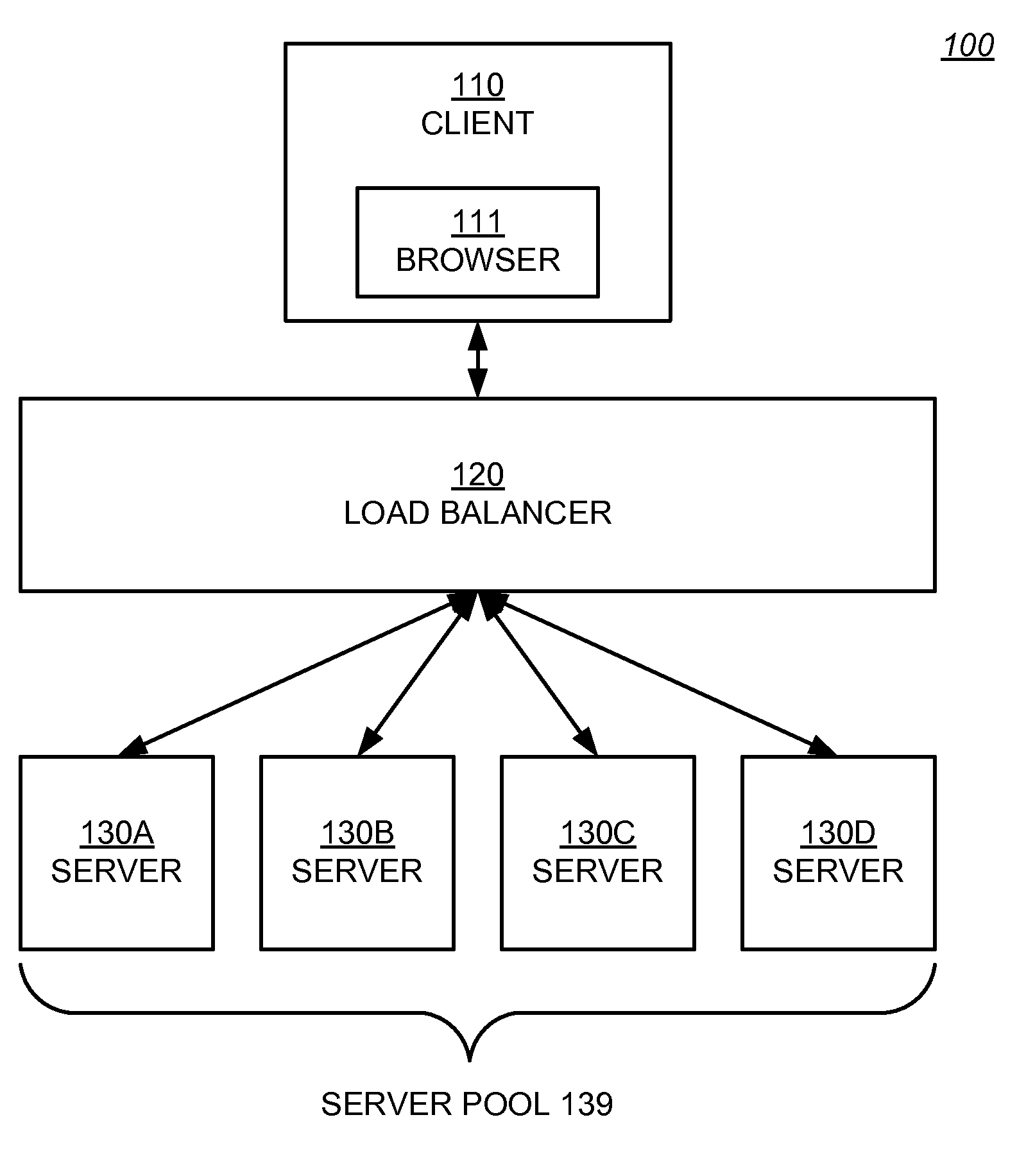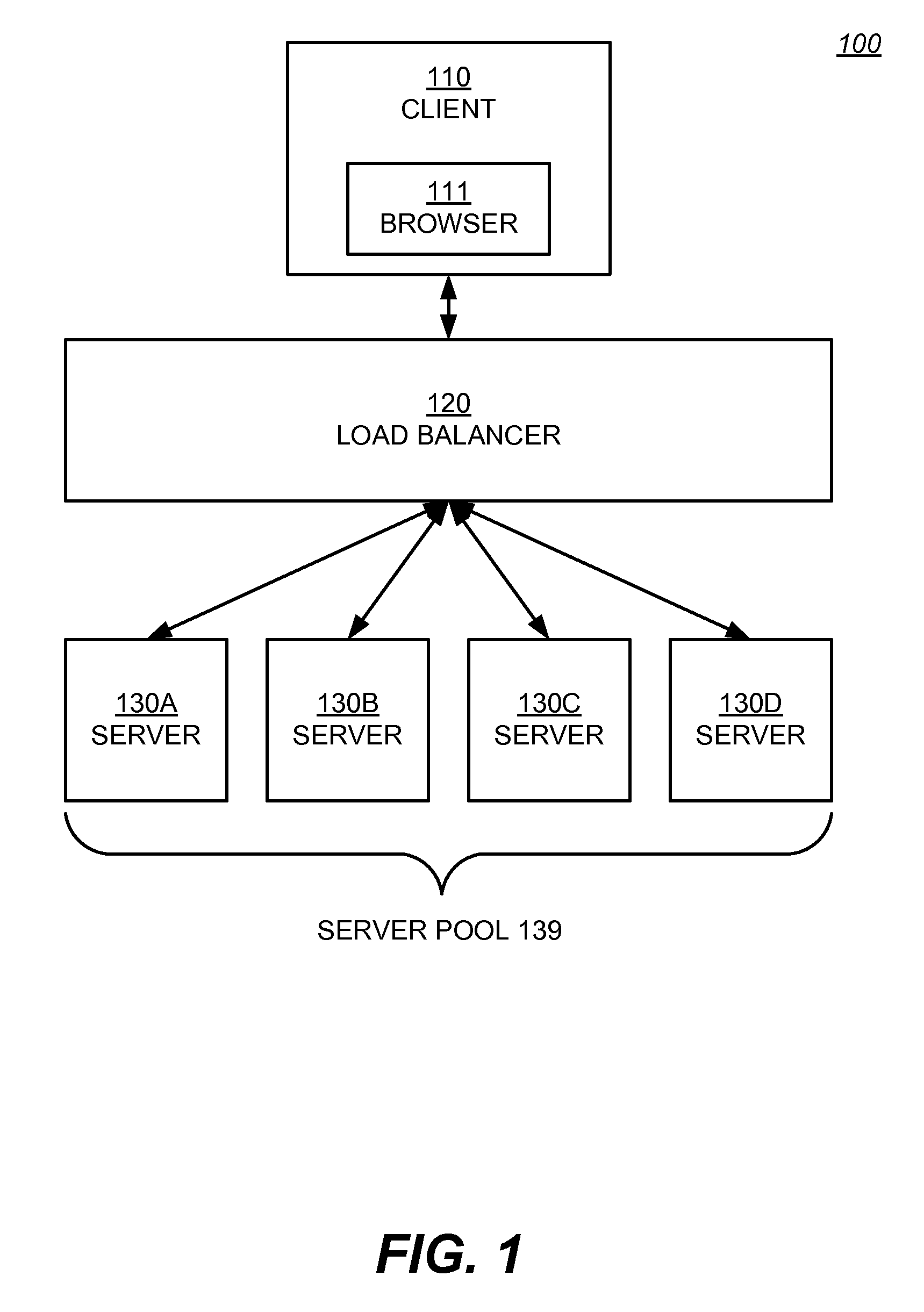Load Balancing Web Service by Rejecting Connections
a web service and load balancing technology, applied in the field of load balancing requests, can solve the problems of affecting the speed of response, the time required to respond to requests, and the processing cost of responding to requests, so as to reduce increase the number of processes concurrently running on the web server
- Summary
- Abstract
- Description
- Claims
- Application Information
AI Technical Summary
Benefits of technology
Problems solved by technology
Method used
Image
Examples
Embodiment Construction
[0016]Embodiments of the present invention provide systems, methods, and computer-readable storage media for load balancing work among a pool of web servers configured to have low queue capacities. A load balancer allocates requests to a plurality of web servers. When an additional request to a web server would exceed the queue capacity of the web server, the server sends a rejection notification to the load balancer, so that the load balancer can send the request to another web server. As a result, the average response time across all of the web servers is improved.
[0017]FIG. 1 is an illustration of a computing environment 100 in accordance with one embodiment of the invention. The computing environment 100 includes a client 110, a load balancer 120, and a server pool 139 connected by a communications network (not shown). In various embodiments, the communications network is a local area network (LAN), a wide area network (WAN), a wireless network, an intranet, or the Internet, for...
PUM
 Login to View More
Login to View More Abstract
Description
Claims
Application Information
 Login to View More
Login to View More - R&D
- Intellectual Property
- Life Sciences
- Materials
- Tech Scout
- Unparalleled Data Quality
- Higher Quality Content
- 60% Fewer Hallucinations
Browse by: Latest US Patents, China's latest patents, Technical Efficacy Thesaurus, Application Domain, Technology Topic, Popular Technical Reports.
© 2025 PatSnap. All rights reserved.Legal|Privacy policy|Modern Slavery Act Transparency Statement|Sitemap|About US| Contact US: help@patsnap.com



